Looking for a delicious berry with a mid-June harvest? Look no further! Haskaps (or honeyberries if you’re gardening in the United States) are the perfect prairie berry for an early harvest! They will continue to produce fruit into fall, but the bulk of the harvest will be done from mid-June to late July.
If you’ve never tried haskap berries, they taste like a cross between a blueberry and a raspberry and are the perfect cold-hardy fruit for Zone 3 gardeners. In this blog post, I’ll let you know how to grow haskaps, where to buy haskap plants online, share a delicious haskap recipe, and more!
Want to learn more about these delectable prairie fruits? Keep reading!
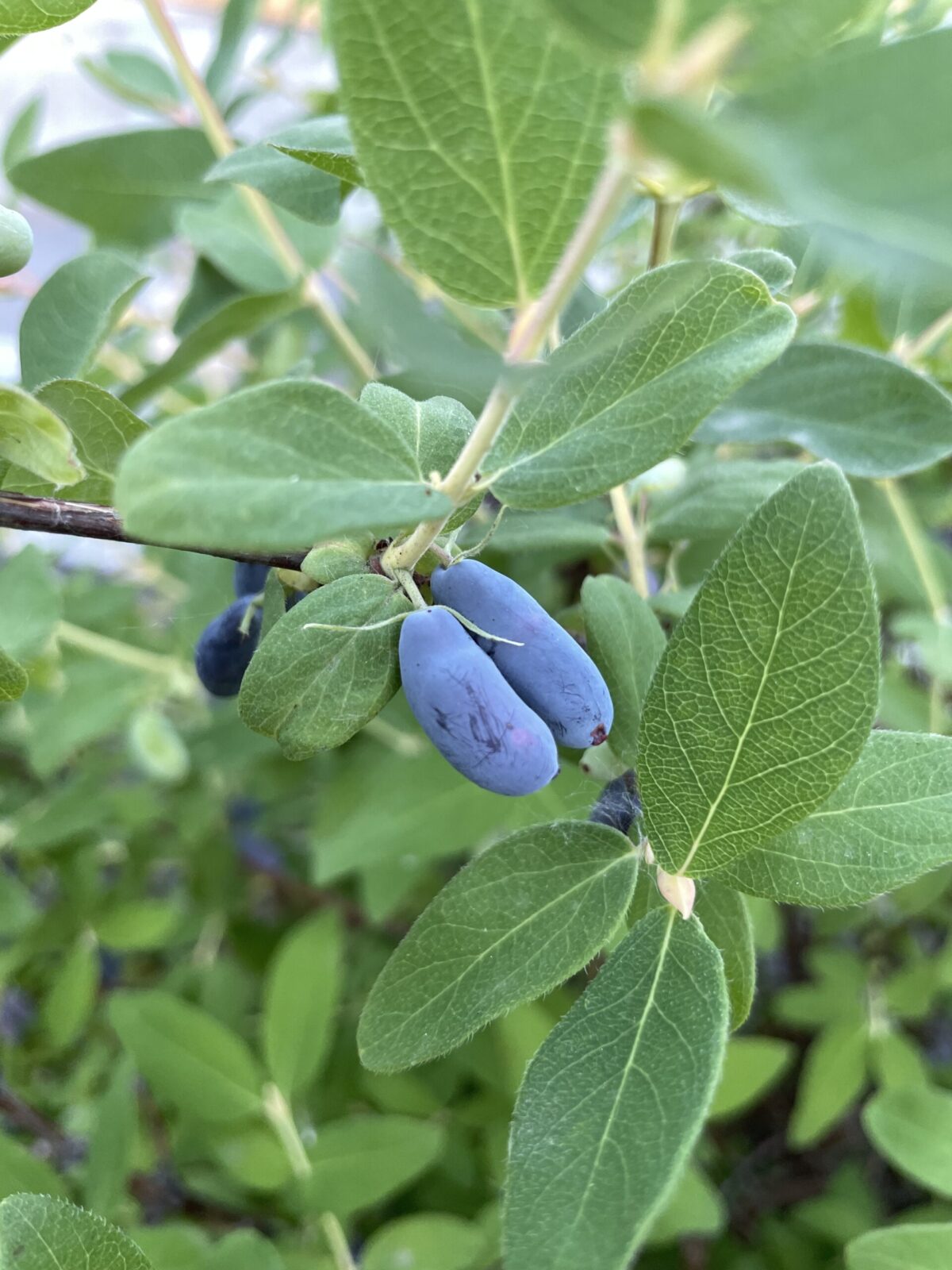
This post contains affiliate links, which means that I earn a little bit of coffee money at no extra cost to you if you purchase something from one of my links. To learn more, check out my privacy policy. Thanks for supporting Shifting Roots!
Where to Buy Haskap Bushes
If you’re looking to buy haskap bushes to plant in your cold-climate garden, the best places to look include:
- Local garden centres and nurseries
- Most big box stores (but they tend to sell quickly)
- Online in Canada: Haskap Girl, T & T Seeds, Veseys
- Online in the US: Stark Bros, Agriforest, Honeyberry USA
I’ve never personally used any of the US suppliers, as I garden in Saskatchewan, but from perusing their websites I feel confident recommending them!
What Growing Zones Can Haskaps Survive In?
Haskaps are perfect for cold-climate gardeners and grow most successfully in Zones 1-4. Because they are incredibly cold-hardy, growing them in higher zones can be a challenge, but some Japanese varieties can bloom up to Zone 9.
Haskap bushes are drought-friendly, their flowers are frost-tolerant, and their berries reach maturity early in the season, making them an obvious choice for short-season gardeners in cold climates!
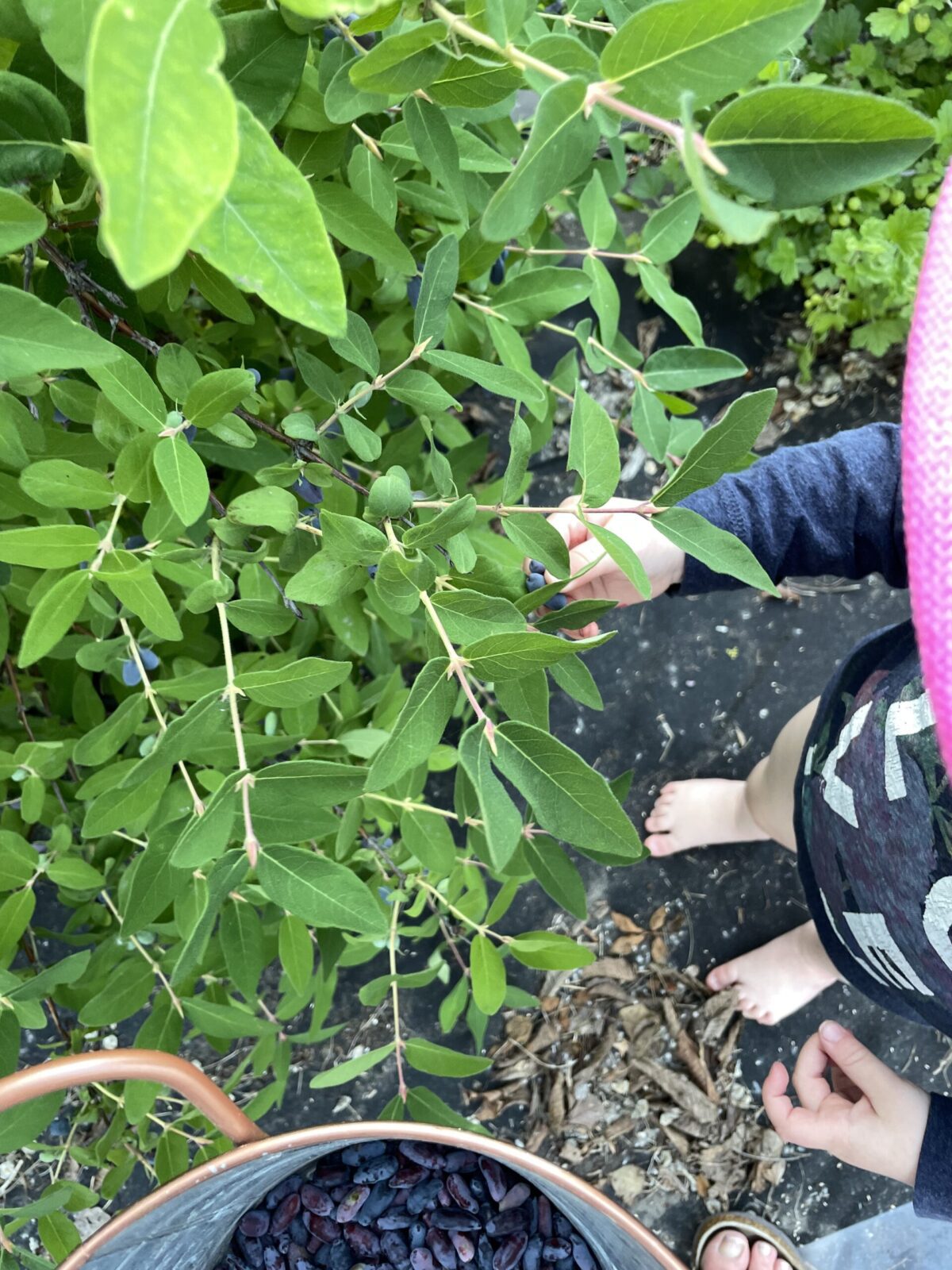
RELATED: 28 HARDY FRUITS YOU CAN GROW IN ZONE 2 AND 3
What You Need To Know Before You Plant Haskap Bushes
Before planting your haskap bushes, choose at least two different varieties for the greatest chance of pollination, or else you won’t get any berries! When planting your bushes, space them around one meter (or 3-4 feet) apart.
Over a period of around 5-7 years, haskap bushes can grow to be up to 8 feet tall, so make sure to plant with their final size in mind! Haskap bushes will grow best in full sun but should do alright in part-shade, as well.
How to Grow and Maintain Haskap plants
Haskap bushes should be planted in wide, deep holes to encourage their shallow root systems to dig deeper and increase the plant’s ability for drought tolerance. They should be watered immediately when planted and then regularly and deeply watered for around 3 years after planting. After your haskap plants are established, they only need minimal watering to maintain their health.
Though haskap bushes don’t have many specific nutrient requirements, an all-purpose fertilizer is appropriate to use in early spring. To keep weeds at bay surrounding the plants in mulch is a good low-cost, chemical-free option.
Haskap bushes are low-maintenance and need very little pruning in the early years of their growth. Any necessary pruning is best done in late fall or early winter after the plants have matured for a couple of years. If properly maintained, haskap bushes should last a long time in cold-climate gardens and produce a substantial fruit harvest year after year!
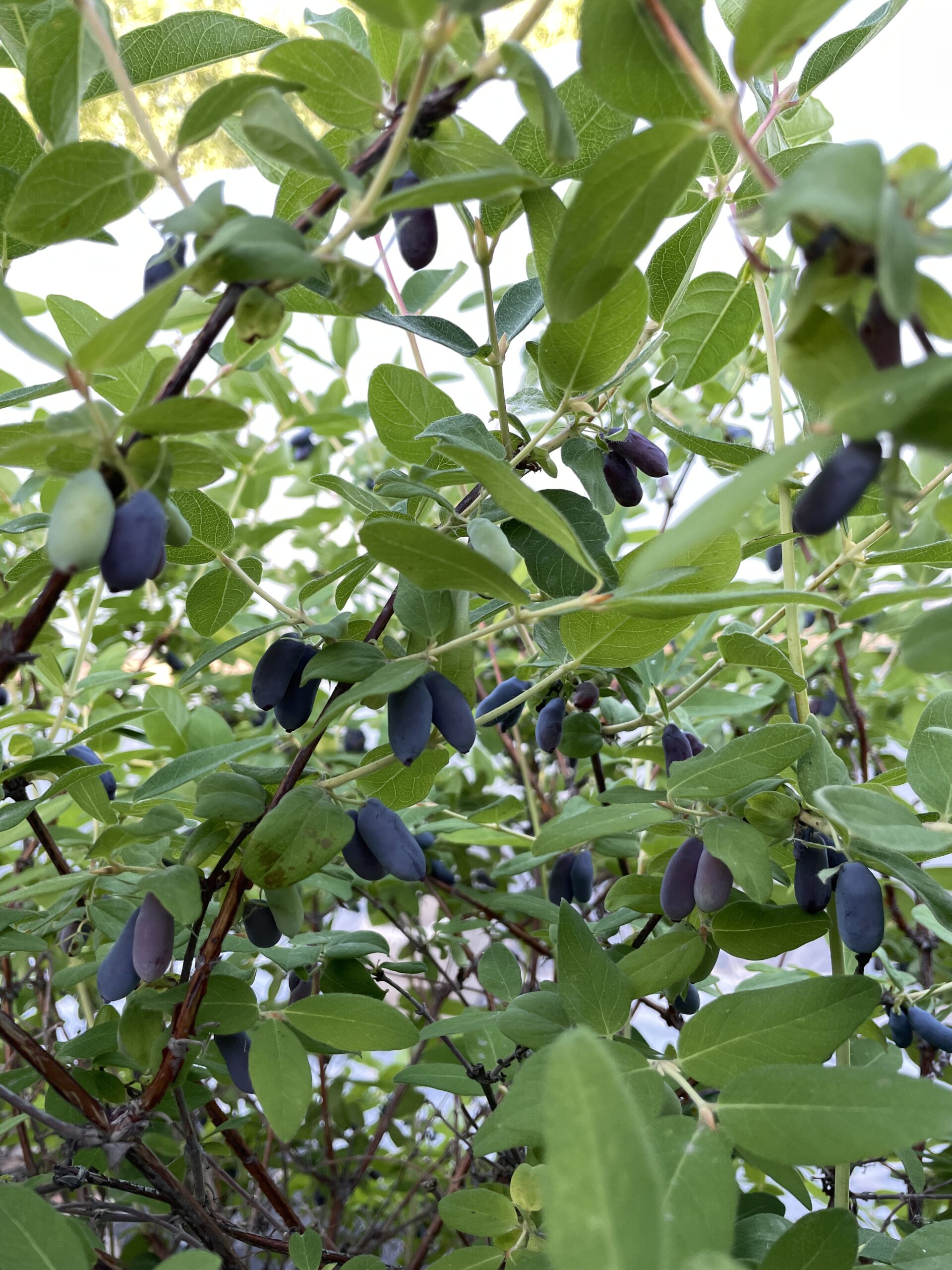
RELATED: HOW TO PLAN AND GROW A THRIVING ORCHARD IN ZONE 3
How long will it take before I get to eat the haskaps?
While you might get a few berries the first year or two, it will take 4-5 years to get a substantial harvest. This year (in 2022), I was able to harvest around 3 cups from two mature bushes. There was more fruit on the bushes, but the birds got to them before I did.
I recommend planting at least four bushes so you’ll have enough to make at least 2-3 recipes each year! You’ll know when the berries are ready when they turn that rich shade of purple and are easy to pick off the branches. Haskap berries do not ripen after picking, so make sure to wait until they are ready to harvest!
The Haskap Varieties I actually grow
On my Zone 3, cold-climate acreage, I grow the Boreal Beauty and Boreal Blizzard varieties of haskaps. To learn more about the benefits of different varieties and growing haskaps and other hardy fruit in cold climates, check out Sara Williams and Bob Bors’ book Growing Fruit in Northern Gardens.

RELATED: 6 Hardy Fruits You Can Grow From Seed
Beware the Birds if you want a harvest
Every year, I get so excited when my haskaps are ripe! Unfortunately, so do the birds. It is always a fight to see who will get to the berries first! The birds don’t move if I yell at them, so my goal is always to pick the haskaps the second they ripen.
If you’re unable to do this, you can always surround your haskap bushes with bird netting to keep your berries safe until you’re ready to harvest them. Check out this video on TikTok to see my first haskap harvest of 2022!
How to Use Haskap Fruits
You can eat haskaps fresh, but they’re best with a little sugar! Use these delightful fruits to flavour your homemade kombucha, lemonade, or iced tea, freeze them for a sweet, cold treat, make jams, jellies, or sauces, combine them with apples, rhubarb, or other berries in pies or crisps, or use them to flavour ice cream or yogurt.
The haskap recipe possibilities are endless! The Haskap Berry Tarts pictured below are a delicious, summery dessert that showcases the unique taste of the honeyberry.
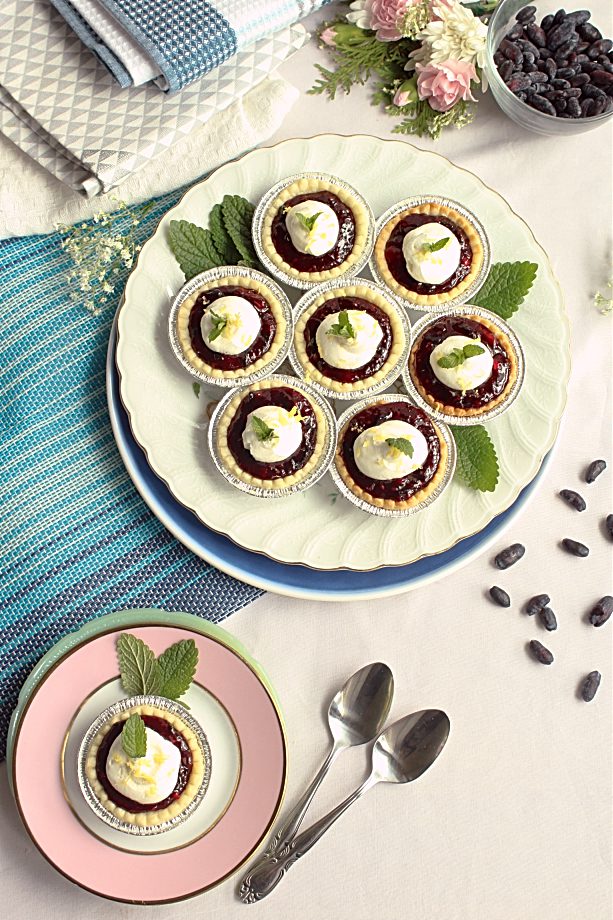
RELATED: The Beginners Guide to Home Canning: What You Need to Know
Have any tips and tricks for growing and harvesting haskaps to add to this list? Find me on Instagram, TikTok, and Facebook, where I share daily gardening advice and inspiration for cold-climate, short-season gardeners! I also document my gardening and flower farming journey weekly on YouTube. I hope to see you there!
WANT SOME MORE SIMPLE HARDY FRUIT RECIPES?
If you’re looking to make delicious recipes with your homegrown hardy fruits, look no further. Check out my e-book Prairie Fruits Cookbook for over 25 mouth-watering dishes!

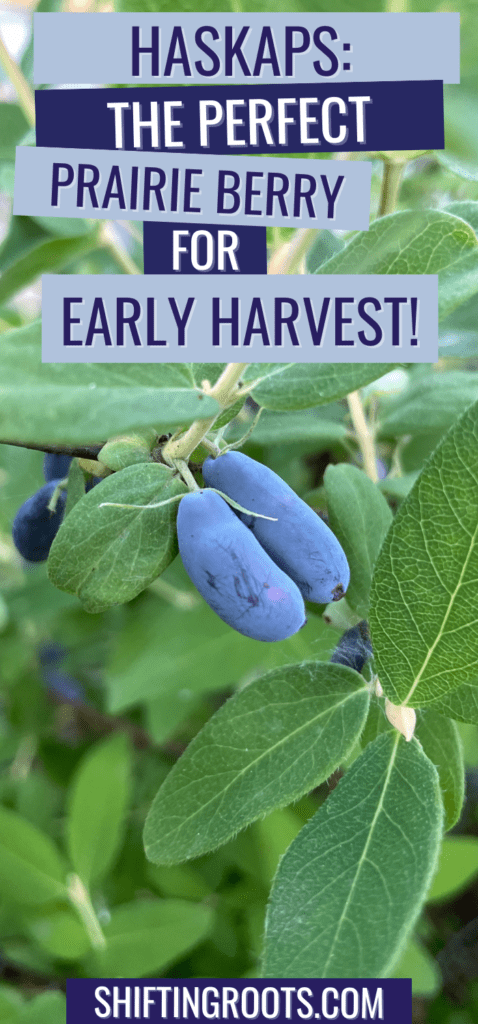
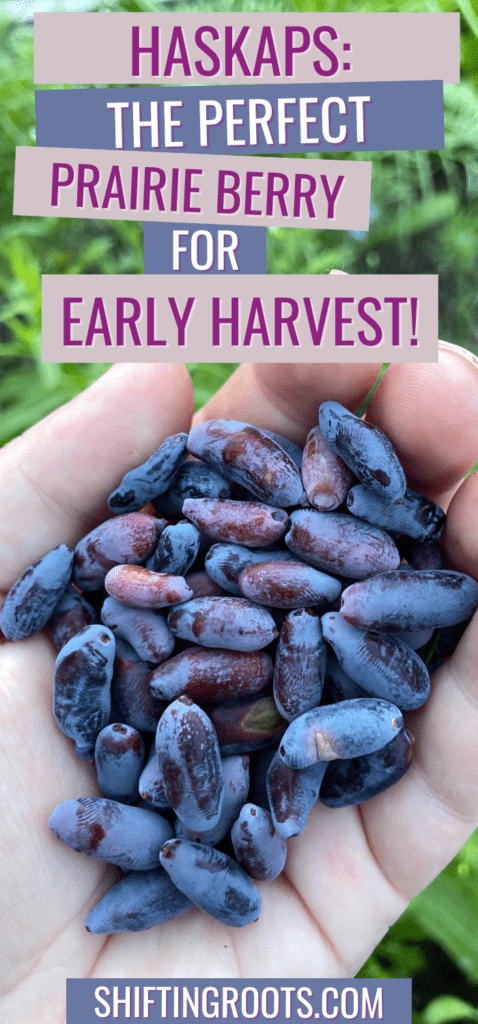

Paul